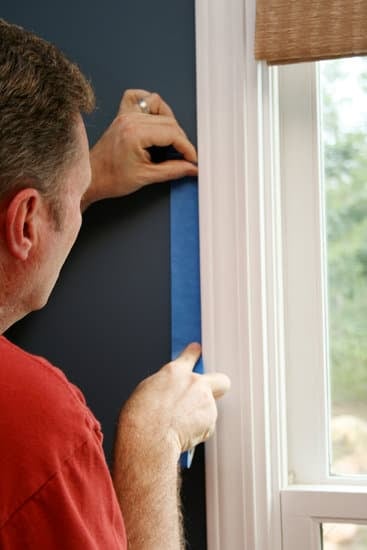In the world of home improvement, sometimes a little extra financial support is necessary to turn your dreams into reality. Whether you’re looking to renovate your kitchen, add an extra room, or simply give your home a fresh new look, the cost of these projects can quickly add up.
This is where bank loans come into play. In this article, we will explore the possibility of obtaining a bank loan for home improvement and delve into the various aspects surrounding this funding option.
Home improvement projects often require a significant investment of both time and money. While some homeowners may have saved up for such endeavors, many others seek external sources of funding to make their dreams come true. One common option is obtaining a bank loan specifically earmarked for home improvement purposes.
The first step in exploring this possibility is understanding why financing home improvement projects matters. By diving into the need for a bank loan, we can examine how it can benefit homeowners in achieving their renovation goals. Additionally, we will investigate the different types of bank loans available for home improvement and compare them to other financing options on offer in order to determine their advantages.
By taking a closer look at these topics and understanding what lenders typically look for in applicants, homeowners can better prepare themselves before applying for a bank loan. A step-by-step guide will be provided to assist individuals through the application process while highlighting common mistakes that should be avoided throughout.
Ultimately, ascertaining whether or not a bank loan is right for your particular home improvement project requires careful consideration. However, by gaining insight into the benefits and potential pitfalls associated with this financing option, you will be equipped with the knowledge needed to make an informed decision regarding your renovation plans.
Understanding the Need for a Bank Loan
When it comes to home improvement projects, financing plays a crucial role in making these renovations possible. Not everyone has the necessary funds readily available to cover the costs of these projects, which is why exploring different financing options becomes essential. One popular option is obtaining a bank loan for home improvement.
Why Financing Home Improvement Projects Matters
Making improvements to your home can greatly enhance its value and functionality, but it often requires a significant investment. From remodeling your kitchen or bathroom to adding an extension or upgrading your HVAC system, these projects can quickly add up in terms of cost. Without the necessary funds upfront, pursuing these improvements might not be feasible for many homeowners.
Financing a home improvement project through a bank loan can provide several benefits. Firstly, it allows you to tackle larger and more ambitious projects that may have been out of reach without assistance.
Secondly, it provides flexibility in terms of repayment options, allowing you to spread out the payments over a longer period instead of putting strain on your finances all at once. Lastly, by opting for a bank loan, you can often access lower interest rates compared to other financing options such as credit cards or personal loans.
Exploring the Different Types of Bank Loans Available for Home Improvement
When considering a bank loan for home improvement, it’s important to understand that different types of loans are available for this specific purpose. The most common types include home equity loans and home equity lines of credit (HELOCs).
A home equity loan is generally a lump-sum loan that allows you to borrow against the equity in your home. This type of loan typically offers fixed interest rates and fixed monthly payments over a set term.
On the other hand, a HELOC functions more like a credit card where borrowers are given access to a line of credit based on their home’s equity. With a HELOC, homeowners can withdraw money as needed and only pay interest on the amount they have borrowed.
Ultimately, the type of bank loan that is best suited for your home improvement project will depend on factors such as the amount of equity you have in your home, the specific costs of the renovations, and your personal financial situation. It’s essential to speak with a lender who can provide guidance on which loan option would be most appropriate for your needs.
Exploring the Different Types of Bank Loans Available for Home Improvement
There are several different types of bank loans available for home improvement projects. These loans can be tailored to meet the specific needs of homeowners, allowing them to fund their renovations and improvements with ease. Here are some of the most common types of bank loans that you can consider for your home improvement project:
- Personal Loans: Personal loans are unsecured loans that are not tied to any collateral. These loans can be used for a variety of purposes, including home improvements. They typically have a fixed interest rate and a fixed repayment term, making it easier for borrowers to budget their monthly payments.
- Home Equity Loans: Home equity loans allow homeowners to borrow against the equity they have built in their homes. The loan amount is based on the difference between the current market value of the home and the outstanding mortgage balance. These loans often have lower interest rates compared to personal loans and can offer tax advantages, but they require homeowners to use their property as collateral.
- Home Equity Lines of Credit (HELOC): Similar to home equity loans, a HELOC also allows homeowners to borrow against the equity in their homes. However, instead of receiving a lump sum payment, borrowers are given access to a line of credit that they can draw from as needed during a specified period. The interest rates on HELOCs are often variable, which means they could change over time.
- Cash-Out Refinance: A cash-out refinance involves refinancing an existing mortgage and taking out additional funds beyond what is needed to pay off the original loan balance. This option allows homeowners to tap into their home’s equity while potentially securing a lower interest rate than their current mortgage.
It’s important to carefully consider each type of bank loan before making a decision. Consider factors such as your financial situation, credit score, repayment terms and interest rates when deciding which type of loan is best suited for your home improvement project.
Benefits of Choosing a Bank Loan over Other Financing Options in Home Improvement
Choosing the right financing option for your home improvement project is crucial to ensure a smooth and successful renovation process. While there are various financing options available, a bank loan offers several benefits that make it a preferred choice for many homeowners.
Lower Interest Rates and Longer Repayment Terms
One of the major advantages of opting for a bank loan for home improvement is that it often comes with lower interest rates compared to other financing options such as credit cards or personal loans. This means that you’ll end up paying less in interest over the life of the loan, resulting in potential savings.
Additionally, bank loans typically offer longer repayment terms, which can make your monthly payments more manageable. With a longer term, you have more time to repay the loan without straining your budget. This can be especially helpful if you’re undertaking a large-scale home improvement project that requires substantial funds.
Potential Tax Benefits
Another advantage of choosing a bank loan for home improvement is the potential tax benefits you may be eligible for. In some cases, the interest paid on a bank loan used for qualifying home improvements may be tax-deductible. This can help offset some of the costs associated with your renovation project.
It’s important to consult with a tax professional or advisor to determine if you qualify for any tax deductions based on your specific circumstances. Taking advantage of these potential tax benefits can further enhance the affordability of financing your home improvement project through a bank loan.
Streamlined Process and Professional Assistance
When opting for a bank loan for home improvement, you’ll benefit from a streamlined application and approval process. Many banks specialize in offering mortgage or home equity loans specifically tailored to fund renovations or upgrades. They understand the needs of homeowners and have developed efficient systems to expedite the borrowing process.
Furthermore, banks often provide their borrowers with access to professional assistance throughout each stage of the renovation journey. This can include guidance on loan options, tips for budgeting and planning, and even recommendations for reputable contractors or suppliers. Having this additional support and expertise can be invaluable when it comes to successfully completing your home improvement project.
Overall, choosing a bank loan for home improvement offers several benefits that make it an attractive financing option. From lower interest rates and longer repayment terms to potential tax benefits and professional assistance, a bank loan provides the necessary funding while ensuring affordability and convenience throughout the renovation process.
Factors to Consider before Applying for a Bank Loan for Home Improvement
Before applying for a bank loan for home improvement, there are several factors that you should consider. Taking the time to evaluate these factors will help you determine whether a bank loan is the right financing option for your specific needs. Here are some key factors to consider before applying for a bank loan for home improvement:
- Interest Rates and Fees: One of the most important factors to consider is the interest rate and fees associated with the bank loan. Different lenders may offer different rates, so it’s essential to shop around and compare offers from various financial institutions. Additionally, pay attention to any additional fees such as origination fees or prepayment penalties.
- Loan Repayment Terms: Another crucial factor to consider is the repayment terms of the bank loan. This includes both the length of the loan and the monthly payments you’ll need to make. Evaluate whether you can comfortably afford the monthly payments without straining your budget. Longer-term loans may have lower monthly payments but could result in paying more in interest over time.
- Loan Amount: Consider how much money you need for your home improvement project and whether a bank loan can cover that amount. Some lenders may have minimum or maximum loan amounts, so make sure to find one that aligns with your specific needs.
- Credit Requirements: Check your credit score before applying for a bank loan as it will play a significant role in determining whether you qualify for a loan and what interest rate you’ll receive. Most lenders prefer borrowers with good credit scores, although some lenders may offer loans specifically designed for those with less-than-perfect credit.
- Collateral Requirements: Some bank loans may require collateral, such as your home or other assets, which can be seized if you fail to repay the loan. Consider whether you’re comfortable using your home or other assets as collateral before proceeding with a bank loan.
By carefully considering these factors before applying for a bank loan for home improvement, you can make an informed decision about whether this financing option is the right fit for your needs. Remember to thoroughly research and compare different lenders to ensure you get the best loan terms and interest rates available.
Qualifying for a Bank Loan
When it comes to applying for a bank loan for home improvement, it is important to understand what lenders look for in loan applicants. This knowledge will help you prepare and increase your chances of getting approved for the loan you need. Here are some key factors that lenders typically consider when evaluating home improvement loan applicants:
- Credit Score: One of the most important factors that lenders take into account is your credit score. Your credit score is a representation of your creditworthiness and indicates how likely you are to repay the loan. Generally, a higher credit score increases your chances of approval and may also get you better interest rates. Lenders typically prefer borrowers with a credit score of 650 or higher.
- Income and Employment Stability: Lenders want to ensure that borrowers have a stable source of income to make timely repayments. They will assess your employment history and the consistency of your income. Having a steady job with a reliable income stream will give lenders more confidence in approving your loan application.
- Debt-to-Income Ratio: Lenders also consider your debt-to-income ratio (DTI), which is the percentage of your monthly income that goes towards debt payments compared to your monthly income before taxes. A lower DTI indicates better financial stability and makes you more likely to qualify for a bank loan. Generally, lenders prefer borrowers with a DTI below 43%.
To increase your chances of qualifying for a bank loan, it is essential to review these factors and take steps to improve them if needed. Paying bills on time, reducing existing debts, and maintaining steady employment can all positively impact these key considerations.
| Factor | Importance | Ideal Range |
|---|---|---|
| Credit Score | High | 650 or higher |
| Income and Employment Stability | High | Steady job with reliable income |
| Debt-to-Income Ratio (DTI) | Medium to High | Below 43% |
By understanding what lenders look for in home improvement loan applicants, you can better position yourself for approval. It is crucial to maintain good credit, stable employment, and a healthy debt-to-income ratio. Additionally, doing your research on the specific requirements of different lenders can also help you align your application with their criteria. Taking these steps will maximize your chances of getting approved for a bank loan for home improvement and help you achieve your renovation goals.
Step-by-Step Guide on Applying for a Bank Loan for Home Improvement
Applying for a bank loan for home improvement can be an effective way to finance your renovation projects. By following a step-by-step guide, you can ensure that the application process goes smoothly and increase your chances of approval.
Gather all necessary documents
Before applying for a bank loan for home improvement, it is important to gather all the necessary documents that will be required by the lender. This includes proof of income, such as pay stubs or tax returns, as well as documentation of any other debts or loans you may have. Additionally, you should prepare a detailed plan of your home improvement project, including cost estimates and timelines.
Research lenders and compare options
Next, take the time to research different lenders and compare their loan options. Look at factors such as interest rates, repayment terms, and any additional fees or requirements. It may be beneficial to consult with multiple lenders before making a decision. Online resources and customer reviews can provide valuable insights into each lender’s reputation and customer satisfaction.
Submit your loan application
Once you have gathered all necessary documentation and selected a lender, it is time to submit your loan application. You can typically do this online through the lender’s website or by visiting a branch in person. Be sure to accurately fill out all required information and double-check for any errors before submitting your application.
After submitting your application, it is important to stay proactive. Keep an eye on communications from the lender and respond promptly if they require any additional information or documentation from you. The approval process can take some time, so be patient while waiting for a decision.
By following these steps when applying for a bank loan for home improvement, you will increase your chances of getting approved and securing the financing you need to complete your renovation projects.
Common Mistakes to Avoid When Applying for a Bank Loan for Home Improvement
When applying for a bank loan for home improvement, it is important to avoid common mistakes that can potentially hinder the approval process. By being aware of these mistakes and taking steps to avoid them, you can increase your chances of obtaining a bank loan for your home improvement project. Here are some common mistakes to avoid:
Failing to Check and Improve Your Credit Score
One of the most significant factors that lenders consider when reviewing loan applications is the applicant’s credit score. Failing to check your credit score before applying for a bank loan can be a costly mistake. A low credit score can result in higher interest rates or even denial of the loan altogether. It is crucial to review your credit report and work on improving it if necessary before applying.
Not Providing Sufficient Documentation
When applying for a bank loan for home improvement, it is essential to provide all the necessary documentation requested by the lender. This includes proof of income, tax returns, bank statements, and any other financial documents they may require. Failure to provide complete and accurate information can delay the loan approval process or lead to rejection.
Borrowing More Than You Can Afford
While it may be tempting to borrow more money than you actually need for your home improvement project, it is important to remember that you will have to repay the loan with interest over time. Borrowing more than you can afford can put a strain on your finances and lead to financial difficulties in the future. Calculate your budget carefully and only borrow what you genuinely need.
By avoiding these common mistakes when applying for a bank loan for home improvement, you can enhance your chances of securing approval from lenders and successfully financing your project. Remember to check your credit score, provide all required documentation accurately, and borrow within your means. Taking these steps will help ensure a smoother loan application process and enable you to achieve your home improvement goals.
Tips for Maximizing Your Chances of Getting Approved for a Bank Loan
Getting approved for a bank loan for home improvement can be a competitive process, as lenders carefully assess your creditworthiness and ability to repay the loan. However, there are several tips you can follow to maximize your chances of approval and secure financing for your home improvement project.
Firstly, it is important to review and improve your credit score before applying for a bank loan. Lenders typically look at your credit history and score to determine whether you are a responsible borrower. A higher credit score will not only increase your chances of approval but also help you secure a lower interest rate. To improve your credit score, make sure to pay all bills on time, reduce outstanding debts, and correct any errors on your credit report.
Additionally, it is crucial to have a clear plan for how you will use the funds from the bank loan. Lenders want to see that you have a well-defined purpose for the loan and that it will be used responsibly. Prepare a detailed budget outlining the costs of your home improvement project, including materials, labor, and any other associated expenses. This demonstrates to the lender that you have thoroughly researched the project and are financially prepared.
Furthermore, having steady employment and income stability can greatly increase your chances of getting approved for a bank loan. Lenders want assurance that you have a reliable source of income and will be able to make regular loan payments. Before applying for the loan, gather documentation such as pay stubs or tax returns to prove your income stability over time.
By following these tips, you can increase your chances of getting approved for a bank loan for home improvement. Remember to always compare loans from different lenders to find the best interest rates and terms that align with your financial goals.
| Tips | Details |
|---|---|
| Review and Improve Your Credit Score | Pay bills on time, reduce outstanding debts, and correct errors on your credit report |
| Create a Detailed Budget | Outline costs of the home improvement project, including materials and labor |
| Ensure Employment and Income Stability | Gather documentation to prove steady income over time |
Wrap-up
Bank loans can be a useful financing option for homeowners looking to fund their home improvement projects. Before deciding whether to pursue a bank loan, it is important to weigh the pros and cons of this type of financing. This wrap-up section will provide an overview of the advantages and disadvantages of bank loans for home improvement, helping homeowners make an informed decision.
One major advantage of bank loans for home improvement is that they often offer lower interest rates compared to other types of financing, such as credit cards or personal loans. This can result in significant savings over time, especially for larger scale projects that require substantial funding. Additionally, bank loans usually come with fixed interest rates, meaning that borrowers can budget their repayments more effectively since the monthly payments remain consistent throughout the loan term.
However, there are also some potential downsides to consider when it comes to using bank loans for home improvement. One drawback is that obtaining a bank loan may involve a more lengthy and complex application process compared to other financing options. Banks typically require extensive documentation and may perform a thorough evaluation of the borrower’s financial history and creditworthiness. This can prolong the approval process and may pose challenges for individuals with less-than-perfect credit scores.
Another factor to consider is that bank loans often require collateral, such as property or assets, as security against the loan. While this can help borrowers secure larger loan amounts and enjoy more favorable terms, it does carry a risk. If the borrower fails to repay the loan according to the agreed terms, they could potentially lose their collateral. Homeowners should carefully assess their ability to meet the repayment obligations before putting their assets at risk.
| Advantages of Bank Loans for Home Improvement | Disadvantages of Bank Loans for Home Improvement |
|---|---|
| Lower interest rates compared to other financing options | Lengthy and complex application process |
| Predictable monthly payments due to fixed interest rates | Requirement for collateral |
| Potential access to larger loan amounts | Risk of losing collateral if loan repayments are not fulfilled |
Conclusion
In conclusion, when it comes to financing your home improvement projects, a bank loan can be a viable option to consider. Throughout this article, we have explored the different types of bank loans available for home improvement and the benefits they provide over other financing options. We have also discussed factors to consider before applying, what lenders look for in applicants, and provided a step-by-step guide on how to apply for a bank loan.
While there are certainly pros and cons to using a bank loan for home improvement, it is important to make an informed decision based on your specific needs and circumstances. One of the major advantages of choosing a bank loan is that it typically offers competitive interest rates compared to other financing options such as credit cards or personal loans.
Additionally, with a bank loan, you can often borrow larger amounts of money which can be useful for larger-scale home improvement projects.
However, before applying for a bank loan, it is crucial to carefully evaluate your financial situation and determine if you are able to comfortably repay the loan. Lenders will consider factors such as your income, credit score, and debt-to-income ratio when assessing your eligibility. It is also important to avoid common mistakes during the application process that could negatively impact your chances of approval.
Ultimately, by considering all the information provided in this article and weighing the pros and cons of bank loans for home improvement, you can make an informed decision that best suits your needs. Remember to do thorough research, compare different lenders and their terms, and take practical steps towards maximizing your chances of getting approved. With careful planning and responsible borrowing, a bank loan can help turn your home improvement dreams into reality while maintaining financial stability.
Frequently Asked Questions
Should you use a personal loan for home improvement?
Using a personal loan for home improvement can be a viable option depending on your circumstances. Personal loans offer flexibility and can be used for various purposes, including home improvement projects. They are typically unsecured loans, meaning you don’t need to provide collateral such as your home or car.
Personal loans generally have fixed interest rates and set repayment periods, which allows you to budget and plan for the payments. However, it’s important to consider the interest rate and fees associated with personal loans, as they can vary based on your creditworthiness. Additionally, if you have equity in your home, you may want to explore other options that could offer more favorable terms.
Are renovation loans a good idea?
Renovation loans can be a good idea for certain situations. These loans are specifically designed to fund home renovation or remodeling projects and can provide a convenient way to finance large-scale improvements. One advantage of renovation loans is that they often come with lower interest rates compared to personal loans or credit cards because they are secured by the value of your property.
Some types of renovation loans also allow you to borrow based on the future appraised value of your home after the renovations are completed, which can give you access to more funds than you would otherwise qualify for. However, it’s crucial to carefully consider the costs associated with these loans and ensure that the increase in property value will offset any expenses incurred.
What is the difference between a home loan and a home improvement loan?
The main difference between a home loan and a home improvement loan lies in their intended purposes. A home loan, also known as a mortgage loan, is used to purchase or refinance a property while providing long-term financing over an extended period, often several decades.
It allows individuals to become homeowners by spreading out the cost of buying a house through regular repayments with accrued interest over time.The terms of a home loan vary based on factors such as interest rates, down payments, and loan duration agreed upon between borrowers and lenders.

I’m thrilled to have you here as a part of the Remodeling Top community. This is where my journey as an architect and remodeling enthusiast intersects with your passion for transforming houses into dream homes.





